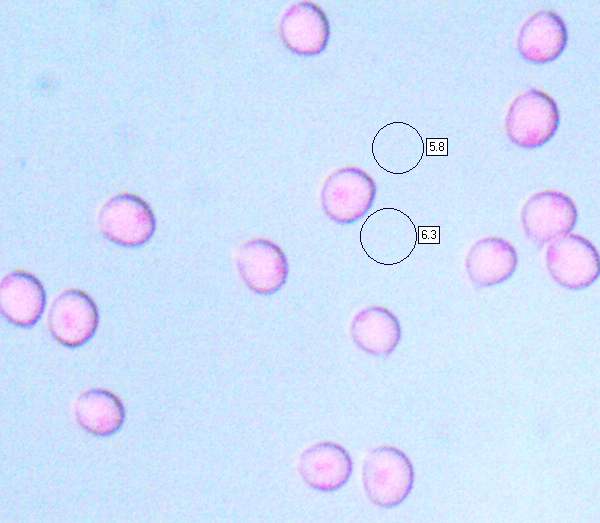Cuphophyllus flavipes (Britzelm.) Bon - Yellow-foot Waxcap
Phylum: Basidiomycota - Class: Agaricomycetes - Order: Agaricales - Family: Hygrophoraceae
Distribution - Taxonomic History - Etymology - Identification - Culinary Notes - Reference Sources
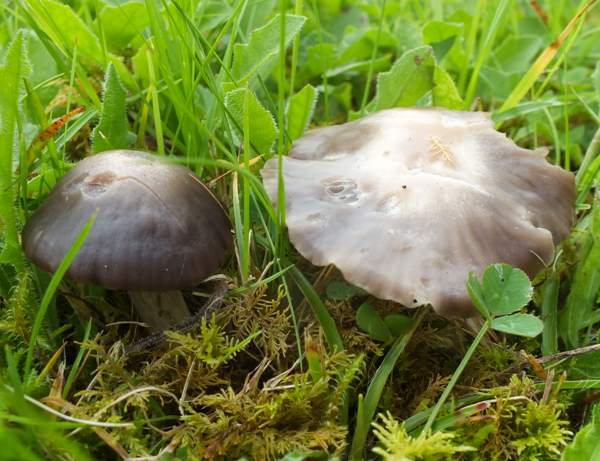
A fairly common but localised waxcap fungus, Cuphophyllus flavipes is recognisable by its arching gills and the yellow surface of its lower stem.
Distribution
Cuphophyllus flavipes is a relatively common waxcap species in Britain, Ireland and most of northern Europe, with occasional records from as far south as northern Spain. The specimens illustrated on this page were found in a village churchyard in West Wales.
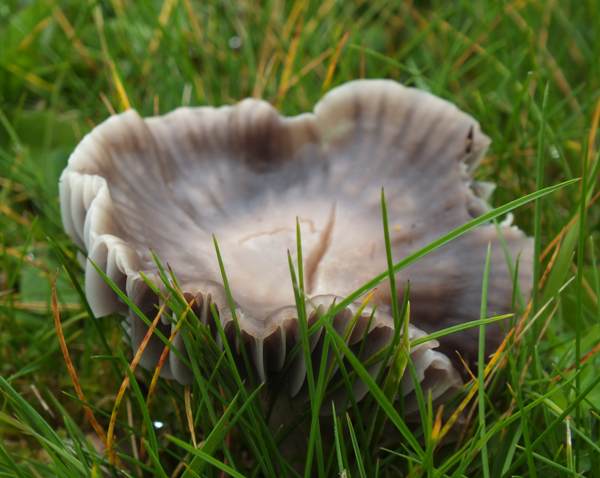
Taxonomic history
Cuphophyllus flavipes is a waxcap whose basionym dates from an 1891 publication by German mycologist Max Britzelmayr (1839 - 1909), who gave it the scientific name Hygrophorus flavipes. The currently-accepted scientic name Cuphophyllus flavipes dates from a 1985 publication by French mycologist Marcel Bon (1925 - 2014).
Synonyms of Cuphophyllus flavipes include Hygrophorus flavipes Britzelm., Hygrocybe flavipes (Britzelm.) Bon, and Camarophyllus flavipes (Britzelm.) Clémençon.
Etymology
The genus Cuphophyllus was described in 1985 by French mycologist Marcel Bon. The prefix Cupho- means curved, while the suffix -phyllus refers to the leaves (gills) of mushrooms in this genus - so we arrive at 'with curved gills'. (Its former genus Hygrocybe is so named because fungi in this group are always very moist. Hygrocybe means 'watery head'.)
The specific epithet flavipes means 'with a yellow foot' - a reference to the colour of the lower part of the stem of this grassland mushroom.
Identification guide
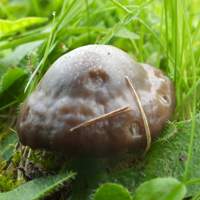 |
CapConvex when young, then flattening, often with a low broad umbo and sometimes slightly infundibuliform (shallowly funnelled) with upturned margins when mature, caps range from 1 to 4cm across; sticky and usually greasy or slightly slimy in wet weather; translucently striate over most of the cap; colour variable from greyish through violaceous grey-brown, darker towards the centre; hygrophanous, turning pale pinkish buff from the centre in dry weather. |
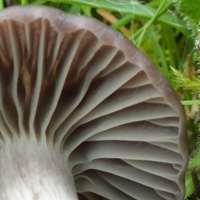 |
GillsArched, decurrent, interveined, the grey gills have paler margins and are widely spaced. Basidia mostly four spored. |
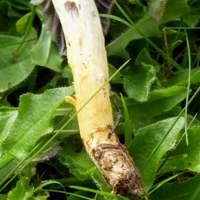 |
StemWhite or very pale grey at the apex, becoming yellow towards the base; cylindrical but usually tapering at the base; longitudinally fibrillose; no stem ring. |
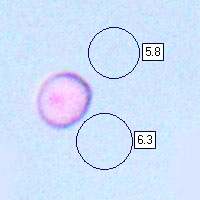 |
SporesSubglobose to lacrimose (teardrop shaped) or broadly ellipsoidal, smooth; 5.5-7.5 x 5-6μm; hyaline; inamyloid. Spore printWhite. |
Odour/taste |
Not distinctive. |
Habitat & Ecological role |
Mainly in unimproved grassland such as old lawns and churchyards. Waxcaps have long been considered to be saprobic on the dead roots of grasses and other grassland plants, but it is now considered likely that there is some kind of mutual relationship between waxcaps and mosses. |
Season |
August to November in Britain and Ireland. |
Similar species |
Gliophorus irrigatus is brownish but much more slimy. |
Culinary Notes
Cuphophyllus flavipes is not generally considered to be a culinary collectible.
Reference Sources
Fascinated by Fungi, 2nd Edition, Pat O'Reilly 2016, reprinted by Coch-y-bonddu Books in 2022.
Fungi of Northern Europe, Volume 1 - The Genus Hygrocybe, David Boertmann, 2010.
Dictionary of the Fungi; Paul M. Kirk, Paul F. Cannon, David W. Minter and J. A. Stalpers; CABI, 2008
Taxonomic history and synonym information on these pages is drawn from many sources but in particular from the British Mycological Society's GB Checklist of Fungi.
Fascinated by Fungi. Back by popular demand, Pat O'Reilly's best-selling 450-page hardback book is available now. The latest second edition was republished with a sparkling new cover design in September 2022 by Coch-y-Bonddu Books. Full details and copies are available from the publisher's online bookshop...
